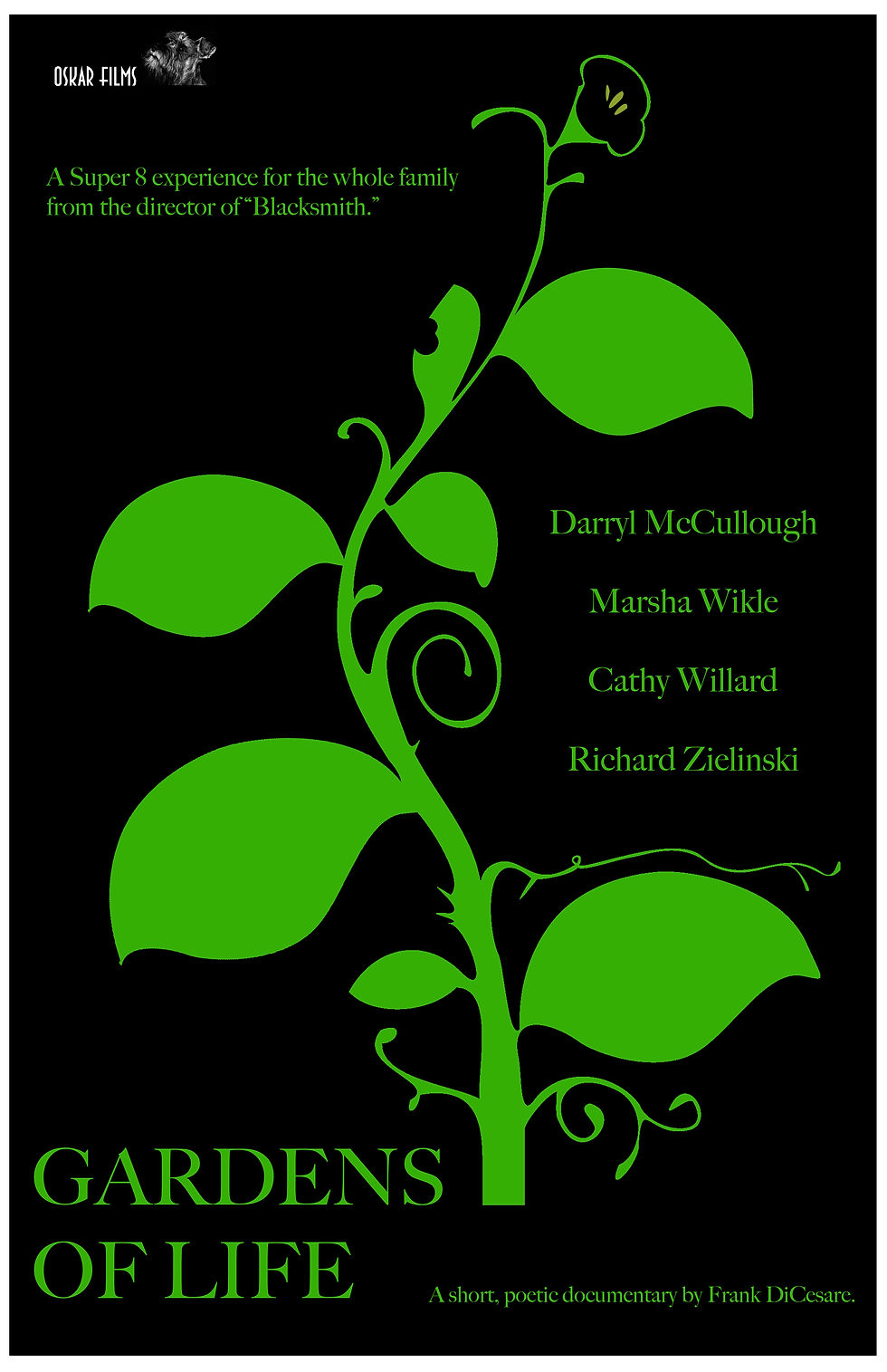- Frank DiCesare

- Apr 5, 2021

The Summer of 1969 was a tumultuous time, marked by the heat of war, politics, and growing cultural divide. One day, in the midst of all that heat, Canadian-born singer- songwriter Joni Mitchell penned the following words that would conclude her song “Woodstock”: “We are stardust, we are golden/We are caught in the devil's bargain/And we've got to get ourselves/Back to the garden.”
A half century later, during the heated Summer of 2020, I was driving along the Sarasota stretch of Highway 41 with my wife, trying to come up with an idea for a new short film. Throughout the previous winter, I was in production on a full-length documentary that COVID-19 would force me to shelve by the early spring. Now it was Summertime, everyone was in lockdown, death and destruction were the single menu options every night on T.V., people were being furloughed by the millions, and a positive thought was nowhere to be found.
Poster (Var. #1) for "Gardens of Life," the new short, poetic documentary
from Oskar Films. The film is currently in production.
“What’s the complete opposite of everything we’ve been seeing lately?” I asked my wife.
“What do you mean?” she replied.
“What’s the opposite of all the death and the destruction and the gloom and doom we’ve been seeing on the news, night after night?”
We sat in silence for several minutes before coming to a red light. I looked to my right and noticed a flower bed by the side of the road. Then the idea hit me – a garden.
For the remainder of our Sunday afternoon excursion, my wife and I talked about gardens and gardening, both literally and metaphorically. We talked about the patience that’s required of a gardener. We talked about the hard work and the focus, commitment, and care a gardener must employ every day for their work to bear fruit. We talked about gardens as one of the ultimate metaphors for life.
We also discussed the garden as a universal symbol, something that transcends politics, race, religion and anything else that may divide us. We all need food to live; we all need natural beauty to make life worth living. For me, the universal symbol is something all good artists search for in their work.
I’m a self-admitted brown thumb, but by the time my wife and I reached the driveway to our home, I had made up my mind – my next film would be about gardening.
Today, I’m pleased to announce that Oskar Films’ new project, “Gardens of Life,” has been registered with the Writer’s Guild of America.

Like our first film, “Blacksmith,” “Gardens” will be a poetic documentary set to music. Unlike “Blacksmith,” “Gardens” will be shot entirely on Kodak Vision 3 Super 8 film. Why Super 8? Aside from the fact that Super 8 is making a comeback in the 2020’s, I believe it’s unique, classic look is perfect for capturing work that has been around since the dawn of man.
“Gardens of Life” will feature four gardeners from Southwest
On the set of "Gardens of Life," Oskar Films Founder Frank DiCesare loads a
cartridge of Kodak Vision 3 200T Super 8 film into his Canon 1014 XL-S
camera. (Photo/Miranda L. Clapp)
Florida: Darryl McCollough, Cathy Willard, Marsha Wikle and Richard Zielinski. Each of their gardens is unique in its own way, but all of these gardeners employ the same patience, commitment, focus, hard work and care in their daily work. Suffice it to say, these same virtues seem to be in short supply in today’s troubled world. Perhaps we all need to get back to the garden, whether in a literal or figurative sense.
It is my hope that “Gardens of Life” will, at a minimum, inspire people to try their hand at gardening or any other activity that doesn’t yield instant gratification. At the most, I hope the film illustrates some of the things that make life worthwhile: patience, commitment, focus, hard work and care.
Stay tuned to this blog for more updates on “Gardens of Life.”
Best wishes,

Frank DiCesare
























